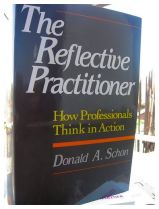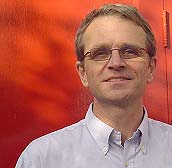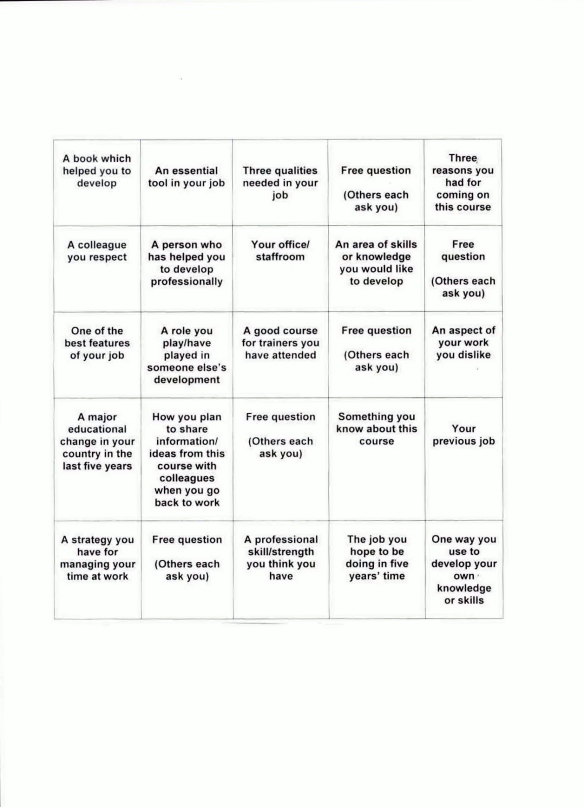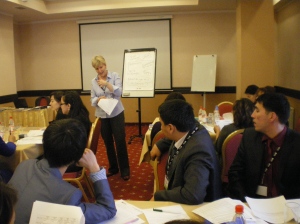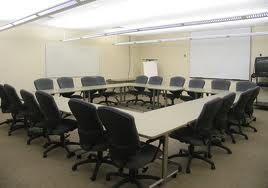Over 720,000 teachers, 1600 teacher trainers, 100 plus trainer trainers and thousands of mentors. By any measure, the statistics of the British Council’s ETTE (English for Teaching: Teaching for English) project are impressive.

My colleague Simon and I are just coming to the end of a four-year training and support consultancy on this project which has encompassed seven countries in Central and South Asia. At this moment, the ETTE project is moving from British Council stewardship to ministries and NGOs throughout the region. ETTE is providing training and support in methodology and language to these enormous numbers of primary and secondary teachers. It has extended to mountain villages in Nepal and slum areas in Bangladesh. Teachers from rural areas of Kazakhstan, Afghanistan, Kyrgyzstan , Pakistan and Uzbekistan are also benefiting from it.
As well as the remarkable numbers of teachers reached, sustainability looks extremely promising. Partnerships in each of the countries look strong and optimistic about the future. The ‘product’- training for teachers with low levels of English- is one that is desperately needed in all the contexts- and local agencies are eager to grab it with both hands.
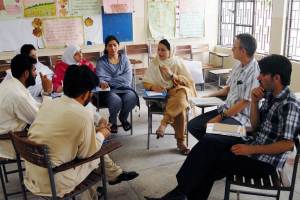
ETTE Trainers in Pakistan
Perhaps unusually for such a large project, we have had the enormous privilege of being lead consultants from Day 1. We’ve provided trainer training, materials development training, supervision of courses development, as well as general methodological consultancy. It’s been a colossal, joyful job for us.
Naturally, for me, now is not only a time of standing back and looking at what everyone has achieved, but also of reflecting on what the project has meant to me personally. My own belief about training and consultancy is that unless I’m learning myself, I’m of little use to participants in my training sessions, or working with me. So what have I learnt through working on the ETTE project, and what do I take with me as I move forward? This is the first in a series of blogs on this subject. Today I want to talk about the initiation stage of the project, and particularly about Commitment and Belief.
Commitment and Belief
Inevitably, a long project such as this goes through a number of different phases. Engagement does not come as a steady flow, but in fits and starts. The initiation phase is delicate and requires effective communication of the need for the project and a good understanding of contexts. How do we convince people that this project will really work? How do we fire up the energies of the talented individuals who will really take the project forward?
There is a lot of literature on this subject- Martin Wedell, for example, writes well about change in education, and I agree with much of what he says in his book Planning for Educational Change. But here, I want to reflect on what I experienced rather than what I’ve read about. In this first phase of ETTE, in which the energy was mainly coming from the project initiators- the project manager, the project owner and us, I found that there were two key components to my own input which helped me, at least: commitment and belief. If I were to write down my ideas on this as pieces of advice to facilitators and consultants they would go something like this:-
- Show your passion for the project
Passion and enthusiasm are infectious. You’re going to be asking people to do a lot of hard work, so they need to know that you think the project is really worth it!
- Act as if it’s happening already
If something is in the future and looks difficult to achieve, it becomes…. In the future and difficult to achieve. ‘Energy flows where attention goes’ is one of the Laws of Attraction.
- Work on communicating the need for change
Clearly, communication is all. Be aware that people are excited by big concepts, thrilled by the potential of making a difference. Be prepared to engage peoples’ higher selves. I learnt that large goals are inspiring for people, and that sometimes you just have to hope that the little steps in between will just get done. When you’re climbing Everest, it’s probably the view of the summit that keeps you going!

A mountain to climb?
- Understand the contexts as much as you can
This is hugely important- and not easy in such a large project. Listen to people, observe when you can, and just get information about what is actually happening in training and teaching. Above all, I am constantly learning and re-learning about the need to listen.
- Acknowledge the difficulties on the ground, but be confident that there are solutions
Not much to add to that really. Needless to say, if people know you understand, you’ll have more credibility. You have to trust that people will find their own solutions and you can only offer them support in doing so.
- Commit to the people who are involved right now
The people who are willing to work in the project at this moment are very important. Commit to them as people, not just as project members. Ultimately, the success of the project will depend on those people. I’ve always valued people, I hope, but in this project I really saw the truth of the concept of ‘ investing in people.’
Well, those are some of my initial reflections, and I’d be interested to hear your thoughts on them. In future blogs I’ll be reflecting on the implementation stage of the project, on trainer training and more.
49.263588
-123.138565


